Black Holes Are Not So Black (Part 3) - Gravitational Waves

Black Holes are not so Black (Part 3) - Gravitational Waves
The existence of Gravitational Waves have been confirmed. But you probably have heard that. In this post, we will break down this profound discovery into comprehend-able chunks.
This is going to be a amazing journey. Ready ?
Redefining Gravity
When we usually talk of Gravitation we are bound to think like Newton, where objects are assumed to exerting a force upon each other.
Like imaginary arrows of force in space. But this picture, although good for high school crumbled, with the advent of Einstein’s theory of Relativity.

What is the Space-Time Fabric?
Think of space-time fabric as an actual cloth of fabric. ( An analogy )
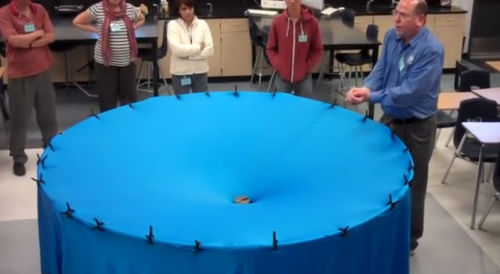
When you place an object on the fabric, the cloth curves. This is exactly what happens in the solar system as well.

The sun with such a huge mass bends the space-time fabric. And the earth and all the planets are kept in orbit by following this curvature that has been made by the sun.
Attributing to the various masses of objects, the way they bend this fabric also varies.
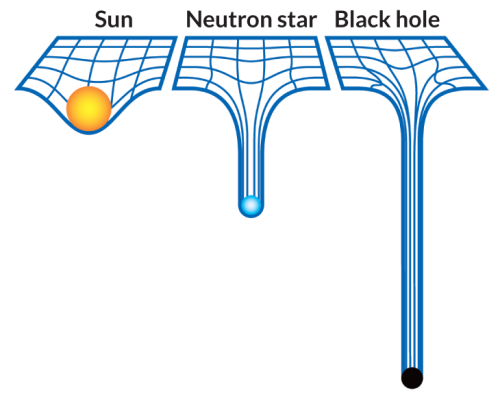
What are Gravitational Waves?
If you drop an object in a medium such as water, they produce ripples that propagate as waves through the medium.

Similarly, Gravitational waves are ripples in space-time fabric produced when you drag heavy objects through space time.
And the nature of these waves is that they don’t require a medium to propagate.
How do you make one?
Everything with mass/energy can create these waves.

Source
Two persons dancing around each other in space too can create gravitational waves. But the waves would be extremely faint.
You need something big and massive accelerating through space-time in order to even detect them.

And orbiting binary stars/black holes are valuable in this retrospect.
How can you detect them?
Let’s turn to the problem to detecting them assuming you do find binary stars/black-holes in the wondrous space to suite your needs.
Well, for starters you cannot use rocks/ rulers to measure them because as the space expands and contracts, so do the rocks. ( the distances will remain same in both the cases )

Here’s where the high school fact that the speed of Light is a constant no matter what plays an important and pivotal role.
If the space expands, the time taken for light to reach from A to B would be longer. And if it contracts, the time taken for it to reach from A to B would be smaller.

PC: PHDComics
By allowing the light waves from the contraction and expansion to interfere with each other, such as done in any interferometry experiment we can detect the expansion or contraction. Voila!
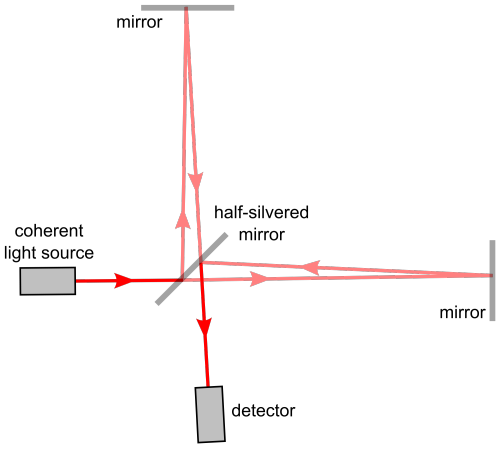
And this is exactly what they did! ( on a macroscopic level ) at LIGO (Laser Interferometer Gravitational-Wave Observatory)
14 September 2015

Two Black Holes with masses of 29 and 36 solar masses merged together some 1.3 Billion light years away.
Two Black Holes colliding is the header animation of the ‘Black Holes are not so Black Series’, in case if you haven’t noticed.

The merger of these two black holes results in the emission of energy equivalent to 3 solar masses as Gravitational Waves.
This signal was seen by both LIGO detectors, in Livingston and Hanford, with a time difference of 7 milliseconds.
And with the measurement of this time difference, physicists have pronounced the existence of Gravitational Waves.
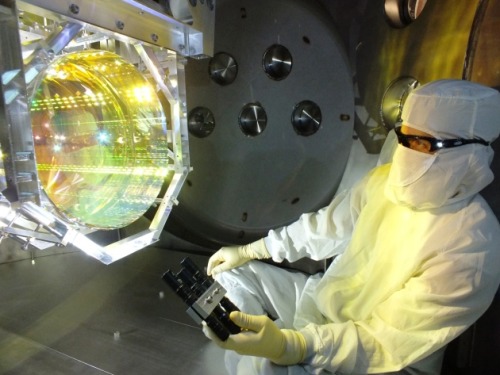
Source
All this is most certainly easily said than done and requires meticulous and extensive research, not to mention highly sensitive instruments.
Had they not have measured this time difference, we might have had to wait for the merger for more massive black holes to collide and maybe even build more sensitive instruments to detect these waves.
And Einstein predicted this a 100 years back!
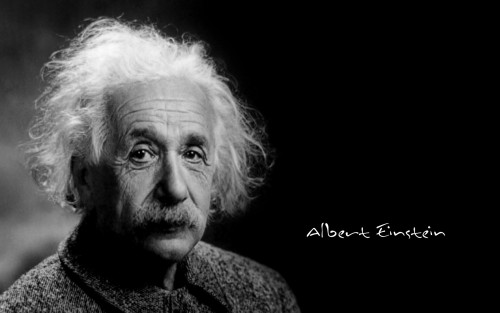
Mind Blown!
Note: Hope you are able to understand and appreciate the profundity of the discovery done by mankind.
** All animations used here are merely for Educational purposes. If you have any issues, please write to us at : [email protected]
More Posts from Intergalacticnerd and Others
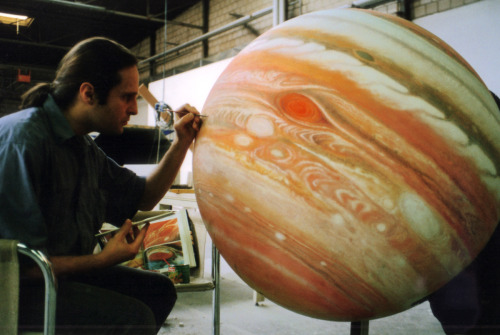
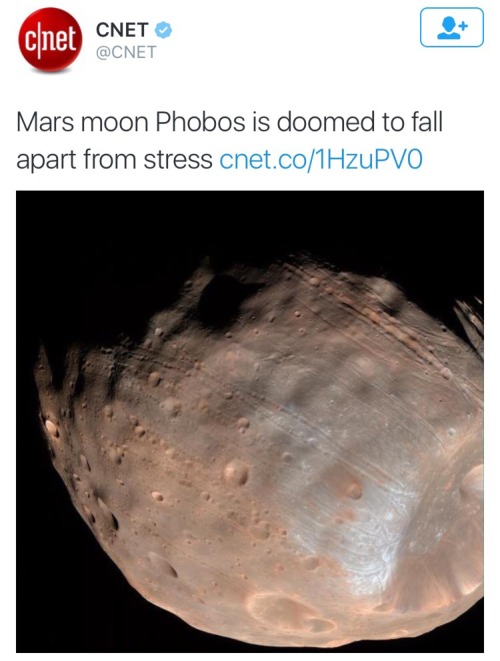
Wow me too








Images of Hubble Ultra Deep Field (the farthest we’ve ever seen into the universe) and it’s close-ups. Astronomers, in 1996, attempted something extraordinary. They pointed the Hubble Space Telescope into a part of the sky that seemed utterly empty, a patch devoid of any planets, stars and galaxies. This area was close to the Big Dipper, a very familiar constellation. The patch of sky was no bigger than a grain of sand held out at arms length. There was a real risk that the images returned would be as black as the space at which it was being pointed. Nevertheless, they opened the telescope and slowly, over the course of 10 full days, photons that had been travelling for over 13 billion years finally ended their journey on the detector of humanity’s most powerful telescope. When the telescope was finally closed, the light from over 3,000 galaxies had covered the detector, producing one of the most profound and humbling images in all of human history - every single spot, smear, and dot was an entire galaxy, each one containing hundreds of billions of stars.
Later, in 2004, they did it again, this time pointing the telescope toward an area near the constellation Orion. They opened the shutter for over 11 days and 400 complete orbits around the Earth. Detectors with increased sensitivity and filters that allowed more light through than ever before allowed over 10,000 galaxies to appear in what became known as the Ultra Deep Field, an image that represented the farthest we’ve ever seen into the universe.The photons from these galaxies left when the universe was only 500 million years old, and 13 billion years later, they end their long journey as a small blip on a telescope’s CCD.
There are over 100 billion galaxies in the universe. Simply saying that number doesn’t really mean much to us because it doesn’t provide any context. Our brains have no way to accurately put that in any meaningful perspective. When we look at this image, however, and think about the context of how it was made, and really understand what it means, we instantly gain the perspective and cannot help but be forever changed by it. We pointed the most powerful telescope ever built by human beings at absolutely nothing, for no other reason than because we were curious, and discovered that we occupy a very tiny place in the heavens.


T-2 hours - JASON-3 and Falcon 9 stand tall on the west coast. For the second time in its history, a SpaceX Falcon 9 v1.1 rocket stands at Vandenberg Air Force Base’s SLC-4E ready for launch. The 224 foot tall rocket will carry the joint NASA/NOAA JASON-3 satellite to study Earth’s oceans. Of the 20 flights of the Falcon 9 to date, all but one has occurred from Cape Canaveral’s SLC-40. The inaugural flight of Falcon 9 v1.1, Cassiope in September 2013, was also the debut of the vehicle on the west coast. The JASON-3 mission will see the final v1.1 Falcon 9 performing the vehicle’s second west coast flight. Liftoff will occur in the middle of a 30-second launch window, at 1:42 pm EST (10:42 am PST). NASA TV coverage started at 11 am EST. Watch the launch live here. p/c: SpaceX/NASA
The Hubble Space telescope just sent back a new photo of the Twin Jet Nebula. Here’s what it looked like in 1997:

And now …

Whoa. But wait, we also got an updated image of the merging galaxies NGC 6240. What it looked like in 2008:

And today:

Science, you’re the best. Oh, and the explanation behind those merging galaxies and their black holes is wild.

Do not go where the path may lead, go instead where there is no path and leave a trail. —Ralph Waldo Emerson









We’ve always defined ourselves by the ability to overcome the impossible. And we count these moments. These moments when we dare to aim higher, to break barriers, to reach for the stars, to make the unknown known. We count these moments as our proudest achievements. But we lost all that. Or perhaps we’ve just forgotten that we are still pioneers. And we’ve barely begun. And that our greatest accomplishments cannot be behind us, because our destiny lies above us.
Interstellar (2014) dir. Christopher Nolan
@nasa release the aliens






Interstellar 2014

This week, NASA released the most colorful, in-depth photo of the universe ever taken. It took the Hubble Telescope 11 years and 840 orbits to capture the 12-billion-year-old light of 10,000 galaxies.
via Mashable
-
 poroussoul liked this · 4 months ago
poroussoul liked this · 4 months ago -
 strutzredux2 reblogged this · 4 months ago
strutzredux2 reblogged this · 4 months ago -
 thedoommerchant liked this · 10 months ago
thedoommerchant liked this · 10 months ago -
 thewaifupillow reblogged this · 10 months ago
thewaifupillow reblogged this · 10 months ago -
 leda-timeandspace liked this · 1 year ago
leda-timeandspace liked this · 1 year ago -
 incognitomuse17 liked this · 1 year ago
incognitomuse17 liked this · 1 year ago -
 presrileahalnorth liked this · 1 year ago
presrileahalnorth liked this · 1 year ago -
 avagtuolofdo liked this · 1 year ago
avagtuolofdo liked this · 1 year ago -
 sunlaire liked this · 1 year ago
sunlaire liked this · 1 year ago -
 misan-thropist reblogged this · 2 years ago
misan-thropist reblogged this · 2 years ago -
 ridw-ali95 liked this · 3 years ago
ridw-ali95 liked this · 3 years ago -
 simbasmistakeofhubris-blog liked this · 4 years ago
simbasmistakeofhubris-blog liked this · 4 years ago -
 snailswithwings liked this · 5 years ago
snailswithwings liked this · 5 years ago -
 homicidal-barbiee liked this · 5 years ago
homicidal-barbiee liked this · 5 years ago -
 sqitward liked this · 5 years ago
sqitward liked this · 5 years ago -
 jpwakamusya liked this · 5 years ago
jpwakamusya liked this · 5 years ago -
 xpaul03-blog liked this · 5 years ago
xpaul03-blog liked this · 5 years ago -
 triple-virgo liked this · 5 years ago
triple-virgo liked this · 5 years ago -
 pigeons4ever-blog liked this · 5 years ago
pigeons4ever-blog liked this · 5 years ago -
 takemeanywheree liked this · 5 years ago
takemeanywheree liked this · 5 years ago -
 skyfireflight liked this · 5 years ago
skyfireflight liked this · 5 years ago -
 spaceclubb reblogged this · 5 years ago
spaceclubb reblogged this · 5 years ago
"Astronomy compels the soul to look upwards and leads us from this world to another." - Plato
147 posts